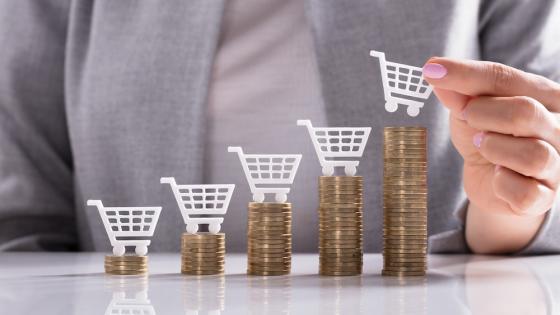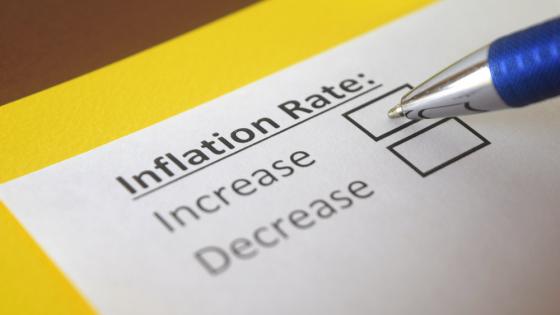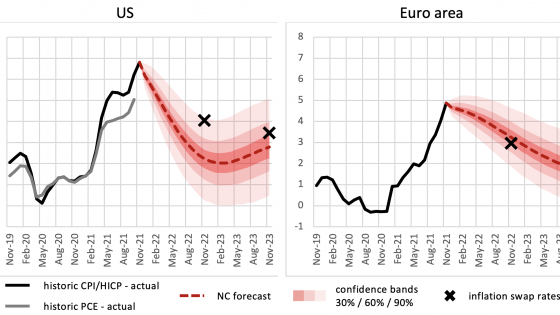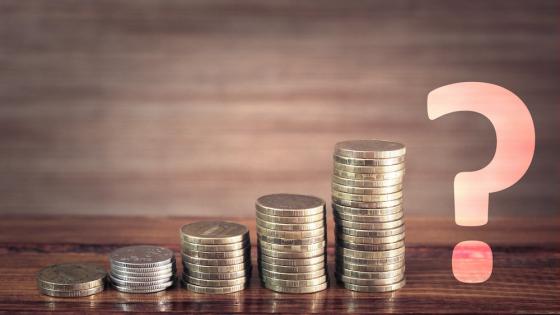Since the re-opening of the global economy, inflation has been surging around the world. This sudden change of macroeconomic conditions caught policymakers off-guard in terms of updating inflation forecasting models to a fast-evolving scenario (Voinea and Loungani 2021) as well as assessing the causes of this sudden surge (Daly and Chankova 2021) and, crucially, whether such causes are transitory or permanent (Gomez-Pineda et al. 2021).
Not surprisingly, central banks assess the context and the prospects for monetary policy differently. On 19 November 2021, ECB President Lagarde stated: “This inflation is unwelcome and painful […]. But […] I will argue that those drivers are likely to fade over the medium term, which is the horizon that matters for monetary policy” (Lagarde 2021). A few days later, Fed Chair Powell argued, instead, that, “[t]he recent rise in COVID-19 cases […] poses […] increased uncertainty for inflation” (Powell 2021).
Who’s right and who’s wrong? In this column, we discuss recent results from academic research suggesting that the truth sits likely in the middle.
The facts: Post-COVID-19 surge in inflation
What are the facts? Figure 1 plots the monthly time series of 12-month CPI inflation rates across three large countries: the US, the UK, and Germany. The plot emphasises three macro-periods: (i) the pre-COVID-19 era, characterised by low and stable inflation rates globally; (ii) the COVID-19 era, when large parts of the global economy were artificially shut down and consumer prices declined; and (iii) the post-COVID-19 era, when inflation surged and reached levels unseen for decades.
To assess the magnitude of this surge, note that in the US the average inflation rate in September and October 2021, at 5.6%, was almost three times higher than the average inflation rate in the six months before the COVID-19 crisis hit.
Figure 1 Yearly CPI inflation in the US, UK, and Germany
Understanding the causes of surging inflation
Despite the rapid surge, this increase in inflation was hardly unexpected. Because of the strict lockdown policies and COVID-19 closures across the globe, both the supply and demand of goods and services suddenly dropped to zero – perhaps for the first time in human history. While production stopped, many consumers started to accumulate savings and liquidity because they did not face income cuts and had fewer opportunities to spend. In many countries, the surge in savings was also fuelled by generous fiscal support through various fiscal policy measures.
Once the global economy reopened, as would happen with any car whose engine was shut down for months in the cold winter weather and below a pile of snow, production activities and supply chains needed time to restart: many workers had reallocated to different jobs, machinery was obsolete, and so on. In contrast, consumers immediately jumped at newly available spending opportunities, thus putting substantial demand pressure on a supply side that was already stressed. It is thus unsurprising that a slowly adjusting supply and fast-growing demand determined supply bottlenecks, backlogs in orders, and ultimately a sharp rise in prices.
In addition to demand pressures and supply-chain disruptions, labour market pressures were a third factor: with a substantial share of the working population retiring early after months of inactivity and other groups having enough liquidity to search for better employment matched, absenteeism and manpower constraints (D’Acunto et al. 2019a) put additional pressure on the recovery and restart of productive activities worldwide (Coibion et al. 2020).
Indirect consequences: Self-fulfilling inflation expectations?
Based on this assessment of the causes of the post-COVID-19 surge in inflation, we would conclude, alongside the ECB, that such causes are likely to be temporary and resolve in the medium run (18 months to 2 years) as supply activities adjust. If so, no monetary policy actions would be needed because inflation would turn back to its long-term target in the medium run.
Recent academic research on the formation and effects of inflation expectations, though, which has not yet been incorporated into the analyses and strategies of most central banks around the world, raises concerns about this interpretation: consumers’ inflation expectations are an important missing piece in the puzzle policymakers are trying to solve.
Because price surges were concentrated in narrowly defined categories such as groceries due to increasing transportation costs, central banks dismissed initial surges in their measures of inflation, which typically use trimmed means and medians. Recent academic research, though, shows that the price increases in goods and services to which consumers are frequently exposed in their daily lives are exactly the ones based on which they form their inflation expectations. For instance, D’Acunto et al. (2021a) document that, on average, women have higher inflation expectations than men because they are more likely to be in charge of grocery shopping for the household, and through higher exposure to large and volatile grocery price changes they form systematically higher inflation expectations. Building on this work, D’Acunto et al. (2021b) create measures of realised inflation at the household level for 60,000 representative US households using scanner data from Nielsen. Households with the highest realised inflation rate over the previous 12 months have almost 1 percentage point higher expectations for general inflation relative to other households, which amounts to about 40% of the average inflation rate over the period studied. Moreover, households mostly consider the goods they purchase frequently, such as milk, even if such goods represent a tiny fraction of their budgets, and positive rather than negative price changes.
These results are in sharp contrast with the standard measures of inflation, which use the expenditure share of a representative household’s bundle to measure inflation and treat positive and negative price changes in the same way. This line of work helps to rationalise why households sharply increased their inflation expectations at the onset of the pandemic, whereas central banks and professional forecasters predicted low inflation throughout 2022 (Coibion et al. 2021a).
This line of academic research also reveals three important points. First, central banks’ focus on core inflation might be misguided when it comes to understanding future inflationary pressures because core inflation, which strips out the volatile price changes of food and energy, excludes the very price changes that most consumers consider when forming their expectations. Second, a sudden rise in inflation of a single good or category could result in a surge in inflation expectations if that good is frequently purchased. Third, even if initial price surges due to bottlenecks revert to normal, households’ inflation expectations might not revert because of the tendency to react more to positive rather than negative price changes. Limited and sudden price surges thus can determine high and persistent increases in households’ inflation expectations.
But why should we care about households’ inflation expectations? The concern is that a surge in inflation expectations might become self-fulfilling. Recent research uses micro data to document that higher inflation expectations often result in higher consumer spending before prices increase (Bachmann et al. 2015, D’Acunto et al. 2015, D’Acunto et al. 2021c, 2021d, Coibion et al. 2021b). Further demand pressure given the post-COVID supply bottlenecks would push inflation even higher.
Households might also demand higher wages to keep their perceived purchasing power constant based on their elevated inflation expectations. Consistently, we observe for the first time in decades substantial wage increases. Initially, wage increases were concentrated in the lower parts of the income distribution, but towards the end of 2021 noticeable increases reached the middle of the distribution, too. Large firms announced that they budgeted average wage increases of around 4% for 2022.
Higher wages imply higher marginal costs for firms. And the shortage of intermediate goods and increasing energy prices put additional upward pressure on firms’ costs of production. In times of low and stable inflation and anchored inflation expectations, firms tend to be hesitant to pass through cost increases because customers might switch to competitors. But when most firms face high cost pressure and customers expect prices to rise anyway, firms are more likely to pass through cost increases into prices. Wage-price spirals, which could get out of hand absent any policy interventions, are not implausible in this context.
Surging inflation in the post-COVID-19 era: Should we worry?
What can policymakers do to avoid the self-fulfilling prophecy of inflation? Time is ticking and central bankers have only two options. The first and more painful option is implementing traditional monetary policy actions, such as increasing policy rates or tapering unconventional monetary policies. One risk here is the triggering of a recession without affecting the underlying causes of rising inflation. The second and less costly route is communicating directly also with ordinary consumers, rather than only with financial market experts, and convincing them that price increases will only be temporary, which would counteract the effect of surging prices on the formation of inflation expectations. Such communication requires simple, non-technical messages and can only reach the average consumer if central banks are fully trusted by households (D’Acunto et al. 2021c, 2021d, 2021e, 2021f). This is especially true for the least sophisticated consumers, who often do not react to monetary policy because they do not understand its implications (D’Acunto et al. 2021g).
Whether central banks will win this communication and trust challenge, thus managing consumers’ inflation expectations effectively, is a question whose answer the world is anxious to learn.
References
Bachmann, R, T O Berg and E R Sims (2015), “Inflation Expectations and Readiness to Spend: Cross-Sectional Evidence”, American Economic Journal: Economic Policy 7(1).
Coibion, O, Y Gorodnichenko, and M Weber (2021), “The Expected, Perceived, and Realized Inflation of U.S. Households before and during the COVID19 Pandemic”, Working Paper.
Coibion, O, Y Gorodnichenko, and M Weber (2021b), “Monetary Policy Communications and their Effects on Household Inflation Expectations”, Journal of Political Economy (forthcoming).
Coibion, O, Y Gorodnichenko, and M Weber (2020), “Labor Markets During the COVID-19 Crisis: A Preliminary View”, NBER Working Paper No. 27017.
D’Acunto, F, D Hoang, and M Weber (2015), “Inflation Expectations Spur Consumption”, VoxEU.org, 9 June.
D’Acunto, F, M Weber, and S Yang (2019a), “Manpower Constraints and Corporate Policies”, Working Paper.
D’Acunto, F, U Malmendier, and M Weber (2019b), “Exposure to Frequent Price Changes Shapes Inflation Expectations”, VoxEU.org, 15 November.
D’Acunto, F, U Malmendier, J Ospina, and M Weber (2021a), “Exposure to Grocery Prices and Inflation Expectations”, Journal of Political Economy 129(5).
D’Acunto, F, U Malmendier, and M Weber (2021b), “Gender roles produce divergent economic expectations”, Proceedings of the National Academy of Sciences 118(21).
D’Acunto, F, D Hoang, and M Weber (2021c), “Managing Households’ Expectations with Unconventional Policies”, Review of Financial Studies (forthcoming).
D’Acunto, F, D Hoang, M Paloviita, and M Weber (2021d), “IQ, Expectations, and Choice”, Review of Economic Studies (forthcoming).
D’Acunto, F, D Hoang, M Paloviita, and M Weber (2021e), “Effective Policy Communication: Targets versus Instruments”, Working Paper.
D’Acunto, F, A Fuster, M Paloviita, and M Weber (2021f), “Diverse Policy Committees Can Reach Underrepresented Groups”, NBER Working Paper No. 29275.
D’Acunto, F, D Hoang, M Paloviita, and M Weber (2021g), “Human Frictions in the Transmission of Economic Policies”, Working Paper.
Daly, K and R Chankova (2021), “Inflation in the aftermath of wars and pandemics”, VoxEU.org, 15 April.
Gomez-Pineda, J, J Julio, and J Roa-Rozo (2021), “The 2021 surge in inflation: A look at sticky prices”, VoxEU.org, 28 November.
Lagarde, C (2021), “Commitment and persistence: monetary policy in the economic recovery”, Keynote Speech at the 31st Frankfurt European Banking Congress 2021 “From Recovery to Strength”
Powell, J (2021), “Testimony by Chair Powell on Coronavirus and CARES Act”.
Voinea, L and P Loungani (2021), “Predicting inflation using cumulative wage gaps”, VoxEU.org, 16 August.




